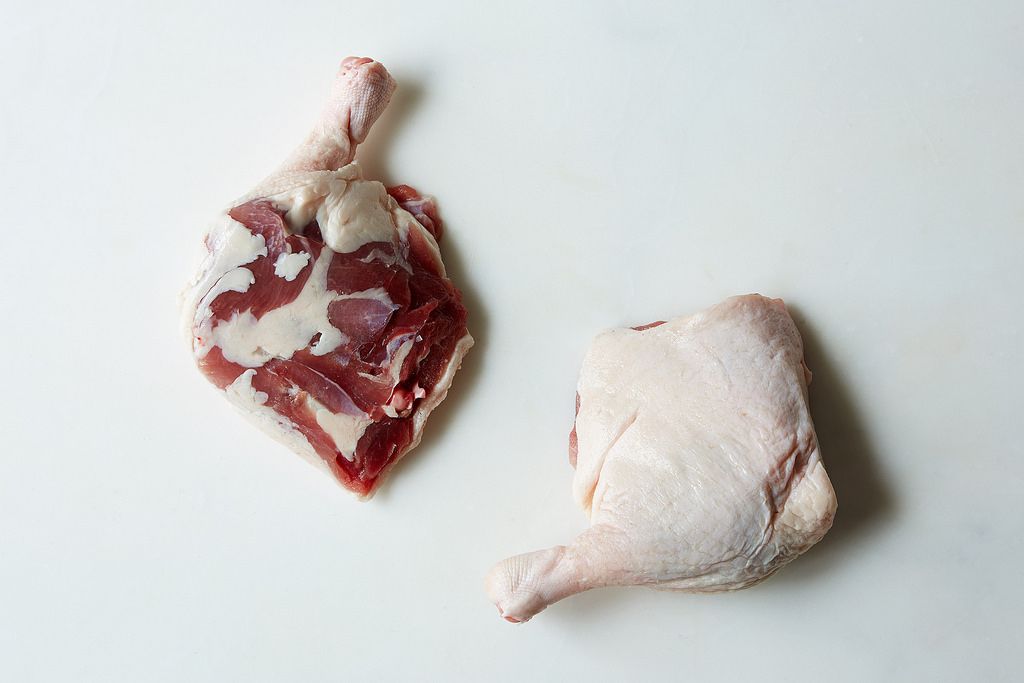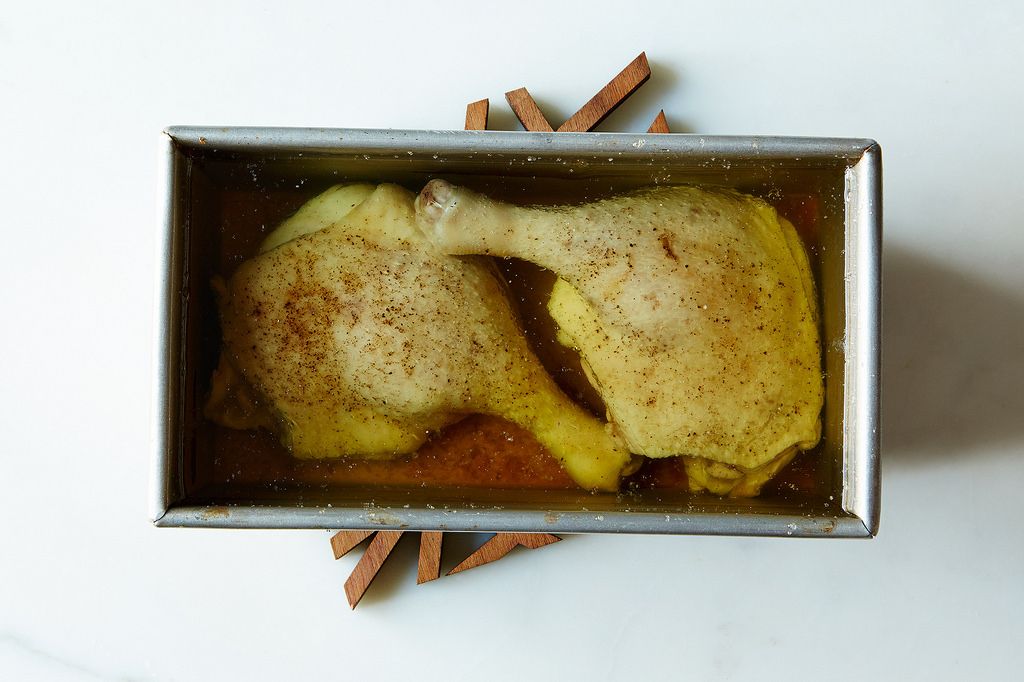Each week, Cara Nicoletti of The Meat Hook is helping us get to know our favorite cuts a little bit better – and introducing you to a few new ones, too. Read on, study up, then hightail it to your nearest butcher.
Today: We're conquering confiting -- a French technique for tenderizing even the toughest of meats.

If you’re anything like me, you freak out a little bit when you see a French word in a recipe title. Even if the recipe is simple, if it calls for a bouquet garni or a demi-glace chances are I’m going to break into a cold sweat for just a second before rolling my sleeves up. For this very reason, I spent years terrified of confits -- until I started cooking at restaurants and realized that “confit” is just a fancy way to say that you’re slow-cooking meat in its own fat.
Confiting is generally a two-step process. First, you cure the meat with salt for 24 to 36 hours; then you cook it slowly for several hours at a low temperature, steeped in its own fat. This method of cooking was invented hundreds of years ago as a way to preserve meat in the days before refrigeration. The salt cure and the fat surrounding the meat create an inhospitable environment for bacteria growth, which keeps the meat from spoiling for months.
More: Cure-crazy? Try your hand at homemade bacon -- here's how.

Thanks to modern refrigeration, these days we don’t necessarily need to confit anything -- but that doesn’t mean we shouldn’t. Because it is surrounded by liquid fat, meat that has been confited retains all of its moisture, so it makes even the toughest cuts melt in your mouth. During the long and slow cook, the temperature of the surrounding fat should stay around 200° F; this is high enough to allow the tougher muscles and connective tissues to slowly break down, but not so high that water starts to evaporate and dry out your meat. Duck legs are a classic cut to confit, but feel free to try this with any slightly tougher cut. And even though you don’t necessarily have to, please refrigerate your duck confit!
Duck Confit
Makes 2 confited duck legs
2 duck legs (thighs attached)
2 teaspoons kosher salt
1/2 teaspoon black pepper (maybe do 1/4 teaspoon if you don’t love black pepper)
3 garlic cloves, minced fine
Leaves of 4 thyme sprigs, chopped fine
2 cups rendered duck fat
1 Turkish bay leaf
See the full recipe (and save it and print it) here.
Have you ever tackled a confit? Tell us in the comments!
Photos by Mark Weinberg
Cara Nicoletti is a butcher and writer living in Brooklyn, New York. Cara started working in restaurants when she moved to New York in 2004, and was a baker and pastry chef for several years before following in her grandfather and great-grandfathers' footsteps and becoming a butcher. She is the writer behind the literary recipe blog, Yummy-Books.com, and author of Voracious, which will be published by Little, Brown in 2015. She is currently a whole-animal butcher and sausage-making teacher at The Meat Hook in Williamsburg.



See what other Food52 readers are saying.